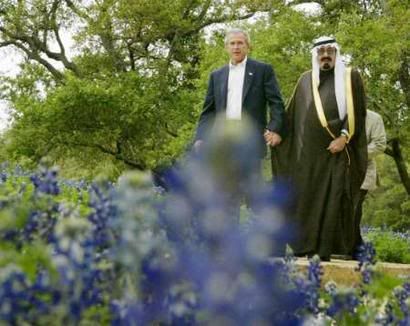by H L Saffell/Mayhill Press
At Riyadh in Saudi Arabia, an American company and its crew set up an 18 acre greenhouse complex which they continue to service and monitor. Since water is more valuable than oil to the Saudis and since the water they have is of poor quality, the Americans had a difficult problem to overcome. With an average rainfall of 8 inches per year, if the Saudis want to grow vegetables they have to rely on ground water which is loaded with salt.
Naturally, the weather is hot and dry. The average yield for vegetables in the field is about 5 tons for each acre used (85,000 acres in all). Yet in the greenhouse at Riyadh, the American company gets more than 200 tons for each acre planted! No wonder the Saudis are impressed and keep urging the Americans onto higher achievements.
One of the reasons hydroponics is making such a good show for itself in Saudi Arabia is the fact that water goes a lot further inside a greenhouse than out in the field. Most of the water used in the greenhouse is for evaporative cooling. With all these restrictions crops are limited to those which are economical to grow. Basically these crops are tomatoes, some lettuce, peppers and cucumbers.
The complex at Riyadh, known as Ibrahim Abunayan Farms, also grows cut flowers which do quite well in an artificial environment and which are in great demand. The last we heard the complex had been in production for well over a decade. The American company brought in its own 5-gallon upright plastic bags and used a medium composed of peat-lite and sand/gravel obtained from the local area. In order to maintain the complex's profitability, the cooling system had to be more than adequate and everyone had to be on their toes. Picking the right cultivar was another important task. Choosing a plan to schedule plantings, feeding and the how and when of implementing disease and insect control were all delicate matters in the desert climate.
You might not think insects would be a problem. But Middle Eastern countries harbor huge insect populations. Most insects, including whitefly, love dry heat. Whitefly is the most harmful because it carries a virus which infects tomato and cucumber plants. In order to slow down the fly's activities, the American company used a filter which was attached to each cooling pad.
Another problem arose. Evaporative pads don't last long in the desert. They soon become clogged from the salt in the water. The Americans found it more economical to replace these pads instead of using the more expensive water obtained from desalinization. The complex now uses a highly absorbent plastic pad which seems to do the job quite well.
SAUDI ARABIA: HYDROPONICS IN THE MIDDLE OF THE DESERT
4:53 PM
ThanateTan







